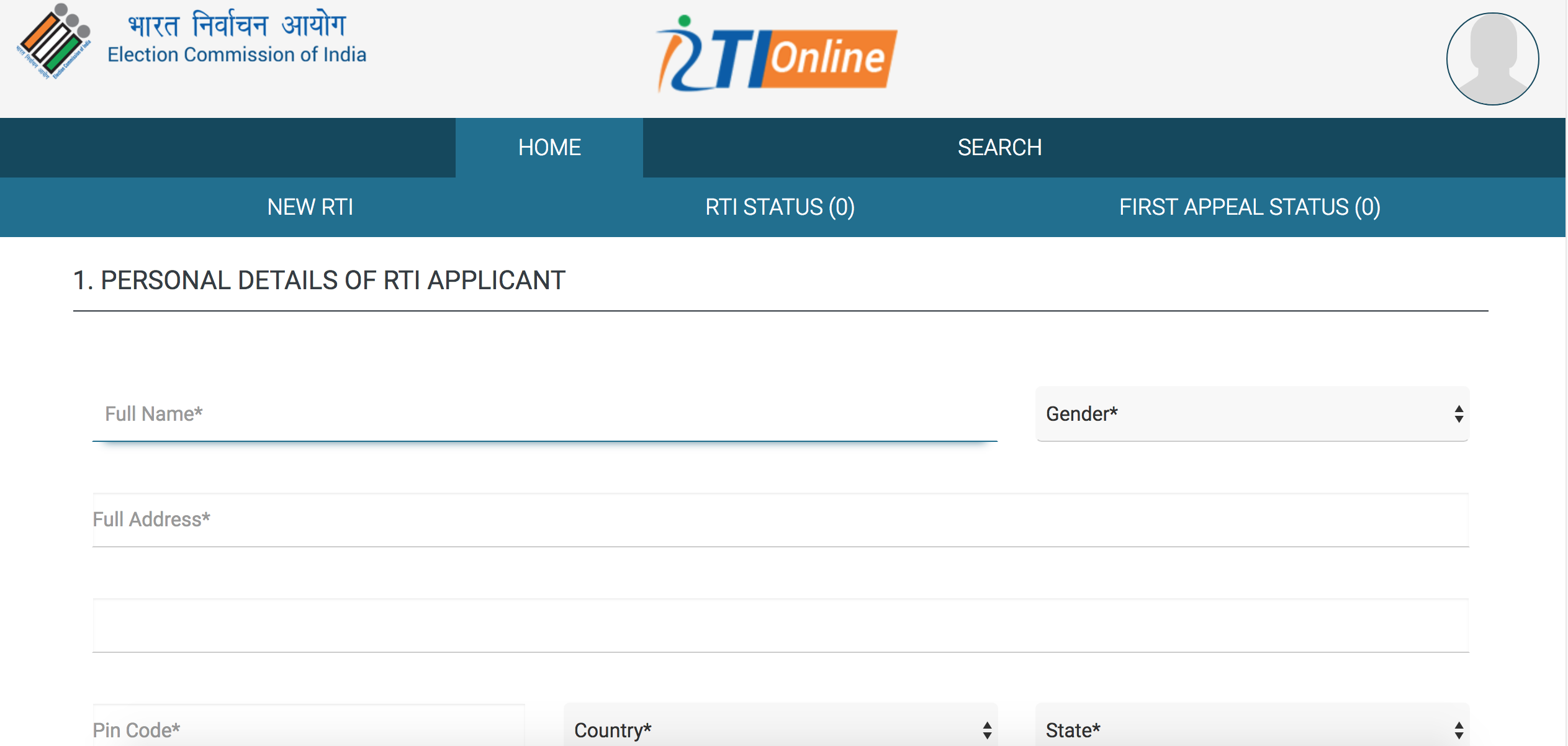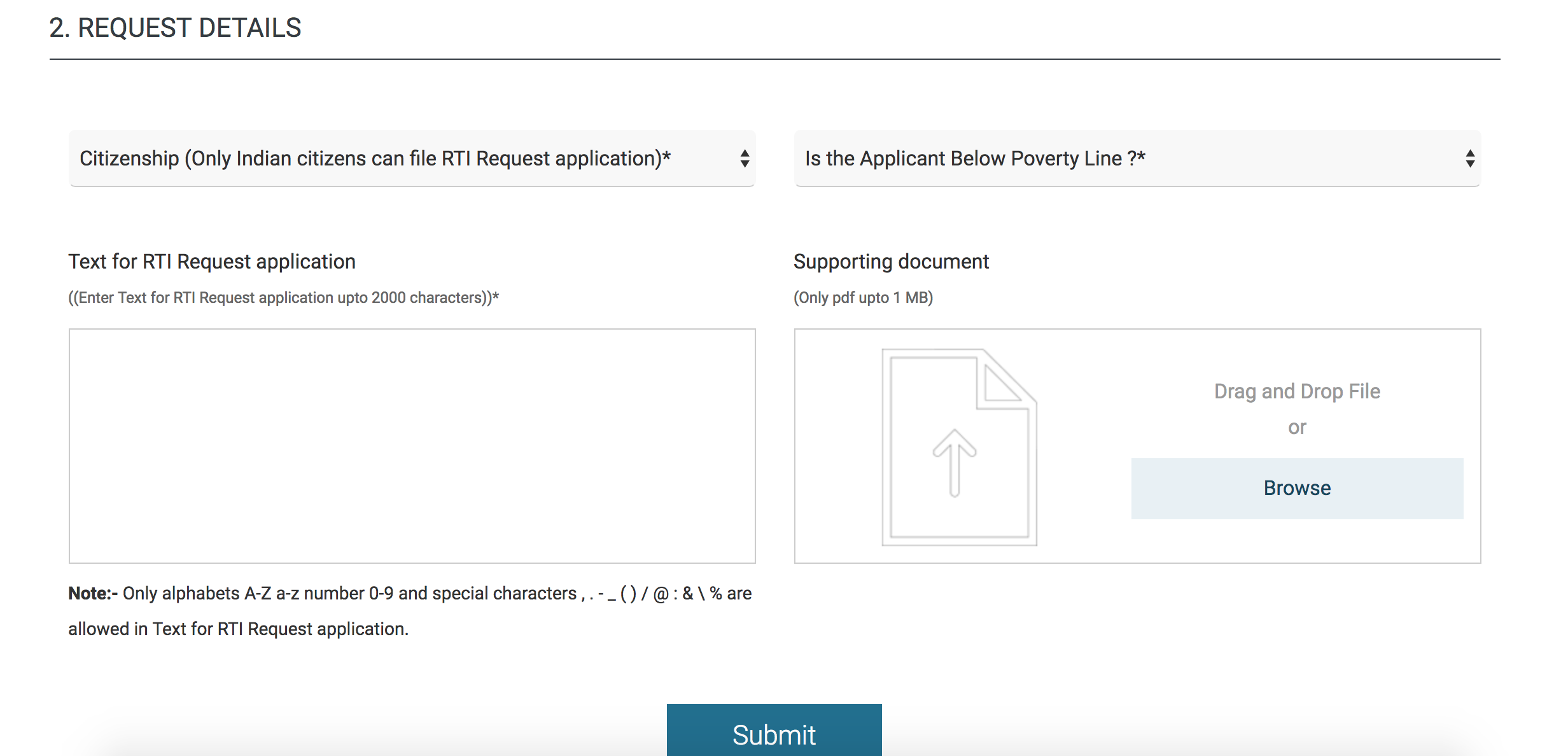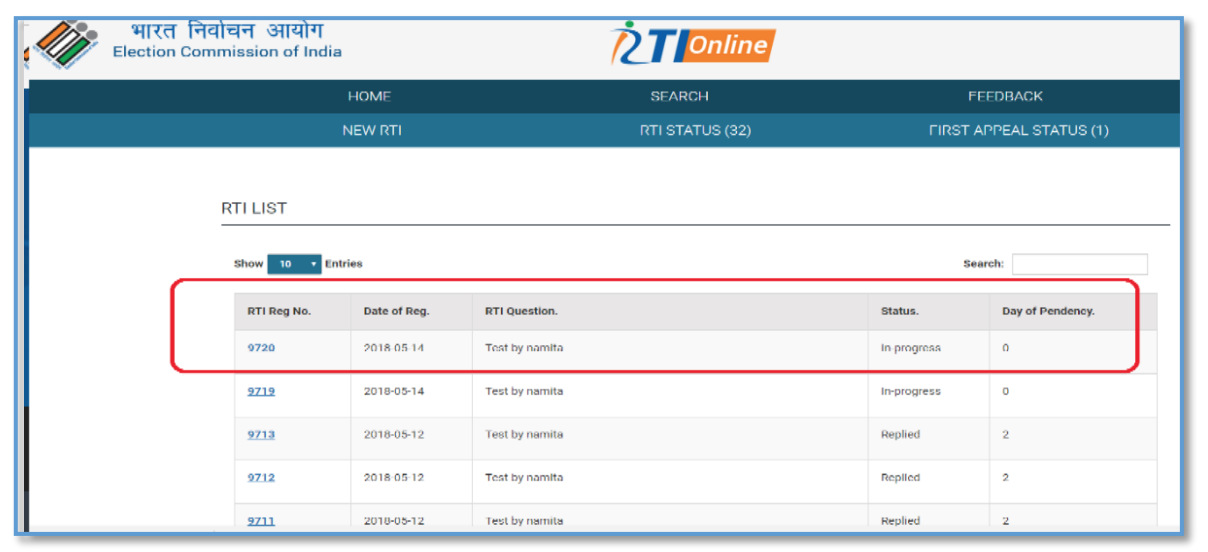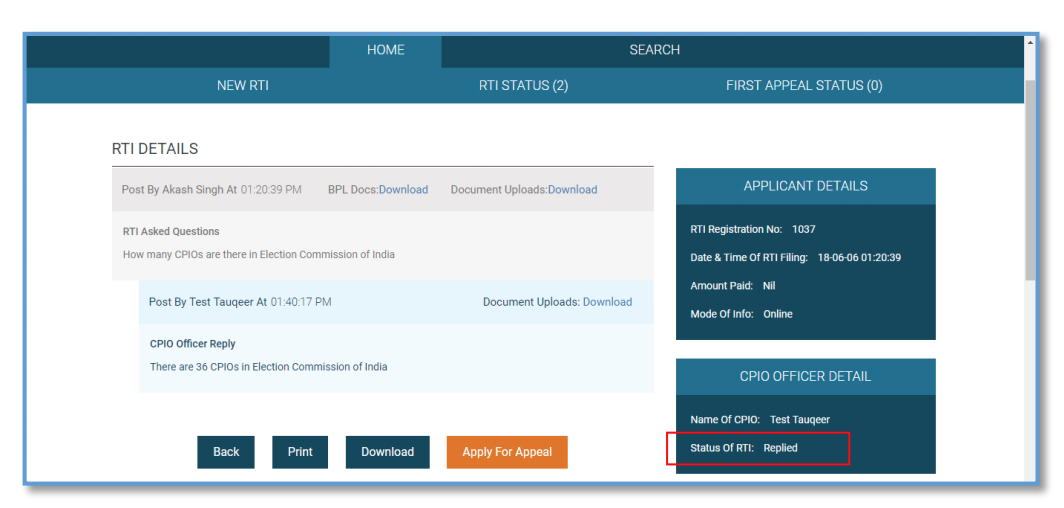[orc]Factly had earlier reported how the Election Commission of India (ECI) refused to be on the ‘RTI Online’ of Government of India. The ECI has now launched its own ‘RTI Online’ for facilitating online RTI applications. What are the features & drawbacks of the new portal?
Factly had earlier reported that the ECI refused to be on the ‘RTI Online’ portal of the Government of India (GoI). Despite repeated reminders, the ECI did not respond to about 2000 applications that were filed on the portal, specifically addressed to the ECI. The Central Information Commission (CIC), in January this year, had directed the ECI to clear all the pending RTI applications filed on the portal. The ECI has now launched its own portal for online RTI applications and has also confirmed that most of the applications that were filed in the past on the GoI’s online portal have also been responded to. What are the features & drawbacks of the ECI’s new portal? Here is a detailed review.
One can login through OTP
There is no separate signup required for the portal. One can login through a mobile OTP and all applications filed with the same number will be grouped under one user.

The application process is also fairly simple. Unlike the RTI Online portal of GoI, one need not choose the department since all the applications are addressed only to the ECI. An applicant has to fill in basic details before proceeding to specifics of the information being sought.

The Application Process
Once the basic details are filled in, the details of the information sought should be typed in the text box available. Currently, there is a limit of 2000 characters for the text. In the FAQs listed on the portal, ECI has said that applicants can upload an attachment in the ‘Supporting Document’ column of the form in case the details of the information sought exceeds 2000 characters. The user guide uploaded on the portal has detailed steps.
 Once the submit button is clicked, a non-BPL applicant is taken to the payment page for payment of the prescribed application fee of Rs 10. The payments are routed through the ‘Razor Pay’ payment gateway. Unlike the RTI Online portal of the GoI, the applicant has to bear the payment gateway fees on the ECI’s portal. The extra amount along with GST comes to 2% of the application fee.
Once the submit button is clicked, a non-BPL applicant is taken to the payment page for payment of the prescribed application fee of Rs 10. The payments are routed through the ‘Razor Pay’ payment gateway. Unlike the RTI Online portal of the GoI, the applicant has to bear the payment gateway fees on the ECI’s portal. The extra amount along with GST comes to 2% of the application fee.

The Appeal Process
Once the application is filed, it will available on the dashboard of the applicant. The dashboard will have all the RTI applications filed with the same mobile number and their status like ‘in progress’, ‘replied’ etc.
 Once the PIO responds to the application, the documents uploaded by the PIO will be visible once the registration number is clicked. Such documents can be downloaded from this page. If any additional charges are to be paid for providing the information, such charges can only be paid offline in the form of DD/Cheque /IPO as of now. Applicants can also file the first appeal from the same page by clicking the ‘apply for appeal’ button.
Once the PIO responds to the application, the documents uploaded by the PIO will be visible once the registration number is clicked. Such documents can be downloaded from this page. If any additional charges are to be paid for providing the information, such charges can only be paid offline in the form of DD/Cheque /IPO as of now. Applicants can also file the first appeal from the same page by clicking the ‘apply for appeal’ button.

The Drawbacks
While the online portal is fairly simple to use, it does have some drawbacks.
- The ECI should not have passed on the gateway fees to the applicant. This fee should have been absorbed by the ECI like in the case the GoI’s online portal.
- Only offline payment of the ‘additional charges’ defeat the whole purpose of having an online portal. ECI should ensure that even additional charges can be paid online.
Update: The ECI has now absorbed the payment gateway fee. We thank our readers for bringing this to our notice.



1 Comment
There is no fees required now. Revision needed